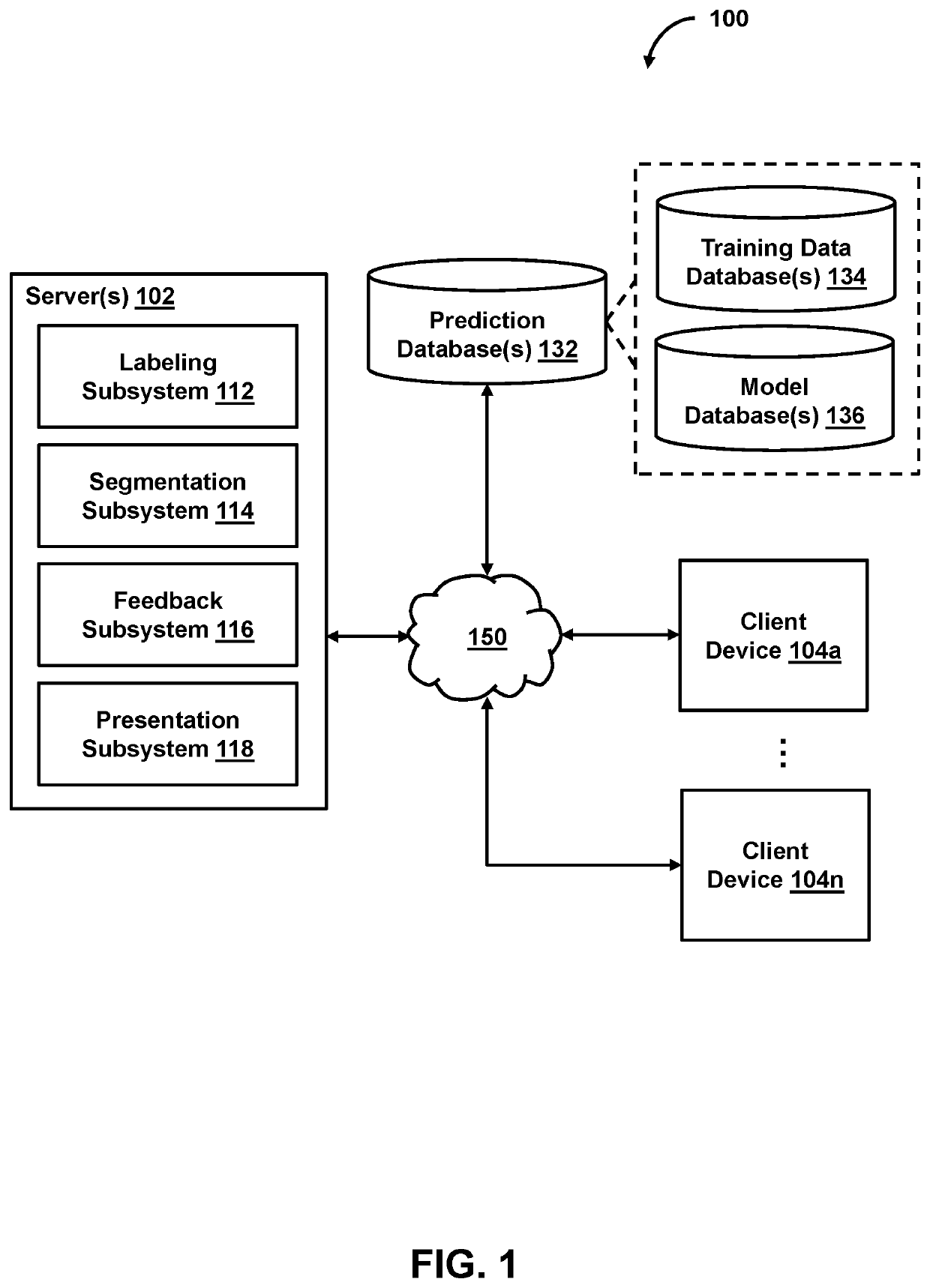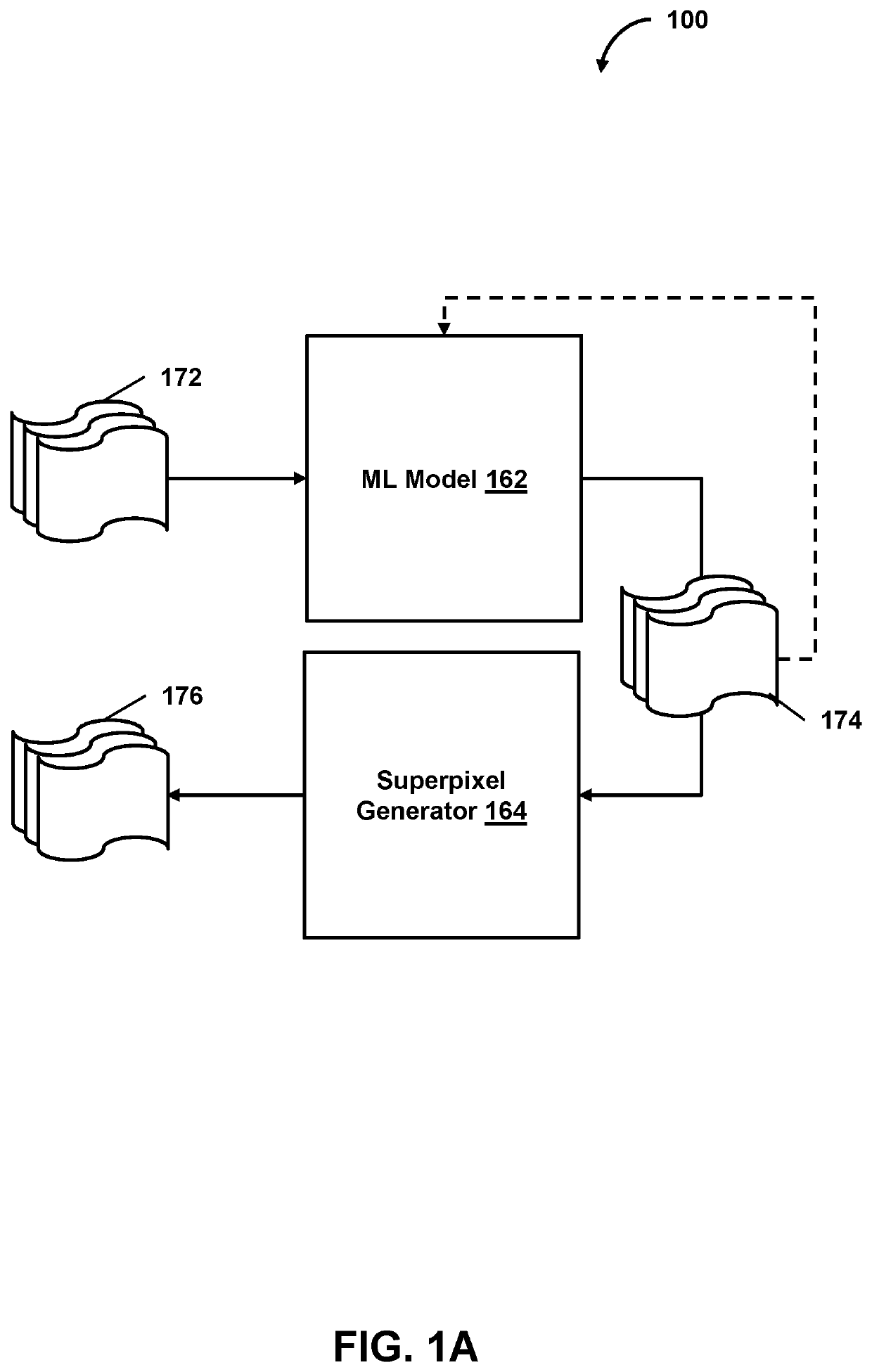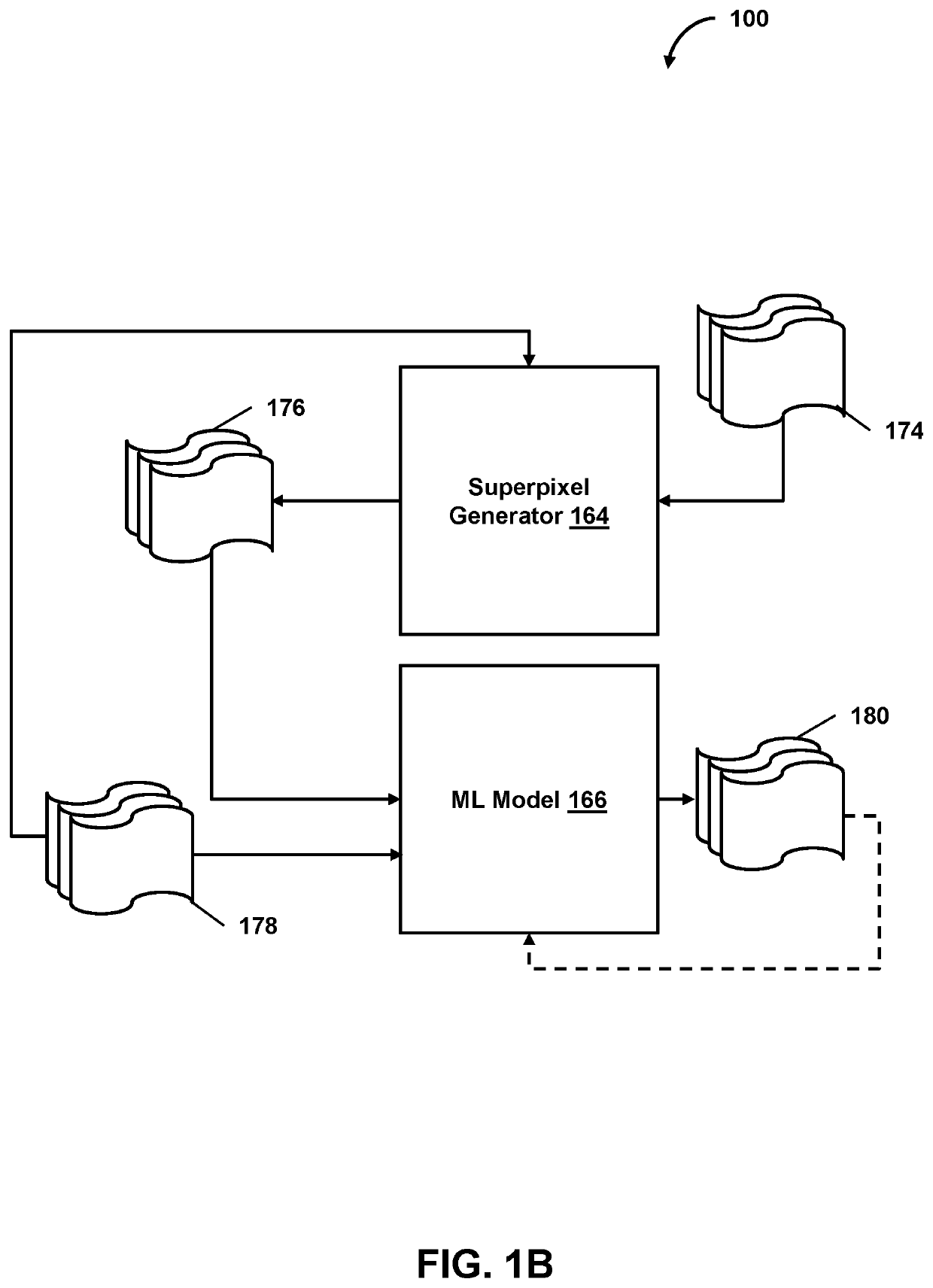Model-based image labeling and/or segmentation
- Summary
- Abstract
- Description
- Claims
- Application Information
AI Technical Summary
Benefits of technology
Problems solved by technology
Method used
Image
Examples
embodiment 1
2. The method of embodiment 1, further comprising: obtaining an indication of a target quantity of segments for the content item; providing the content item to the prediction model to cause the prediction model to predict a quantity of segments for the content item; and providing the target quantity of segments as reference feedback to the prediction model, the prediction model updating the one or more portions of the prediction model based on the predicted quantity of segments, the target quantity of segments, or other information.
3. The method of any of embodiments 1-2, further comprising: obtaining a first indication of a first target quantity of segments for a first region of the content item and a second indication of a second target quantity of segments for a second region of the content item.
embodiment 3
4. The method of embodiment 3, further comprising: providing the first target quantity of segments as reference feedback to the prediction model, the prediction model updating the one or more portions of the prediction model based on a first predicted quantity of segments for the first region, the first target quantity of segments for the first region, or other information; and providing the second target quantity of segments as reference feedback to the prediction model, the prediction model updating the one or more portions of the prediction model based on a second predicted quantity of segments for the second region, the second target quantity of segments for the second region, or other information
5. The method of any of embodiments 3-4, further comprising: generating an initial set of segments for the content item; causing presentation of the initial set of segments over the content item; and obtaining, based on the presentation of the initial set of segments, the first indicati...
embodiment 6
7. The method of embodiment 6, further comprising: causing presentation of the first set of segments over the first region of the content item; and subsequent to the presentation of the first set of segments, obtaining the second indication of the second target quantity of segments for the second region.
PUM
 Login to View More
Login to View More Abstract
Description
Claims
Application Information
 Login to View More
Login to View More - R&D
- Intellectual Property
- Life Sciences
- Materials
- Tech Scout
- Unparalleled Data Quality
- Higher Quality Content
- 60% Fewer Hallucinations
Browse by: Latest US Patents, China's latest patents, Technical Efficacy Thesaurus, Application Domain, Technology Topic, Popular Technical Reports.
© 2025 PatSnap. All rights reserved.Legal|Privacy policy|Modern Slavery Act Transparency Statement|Sitemap|About US| Contact US: help@patsnap.com



